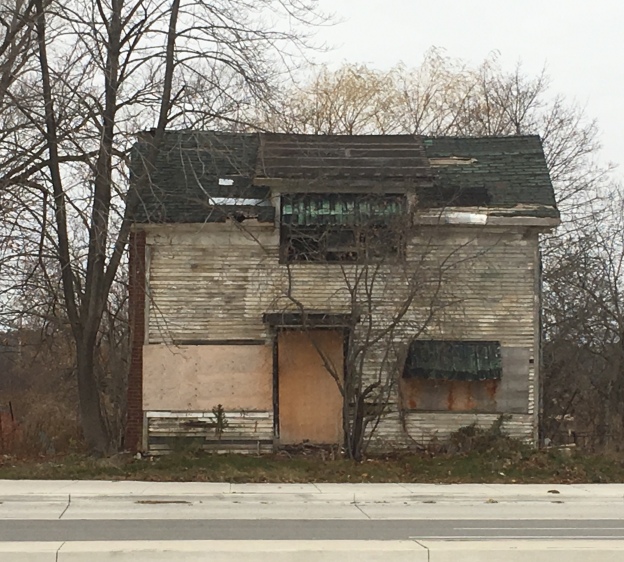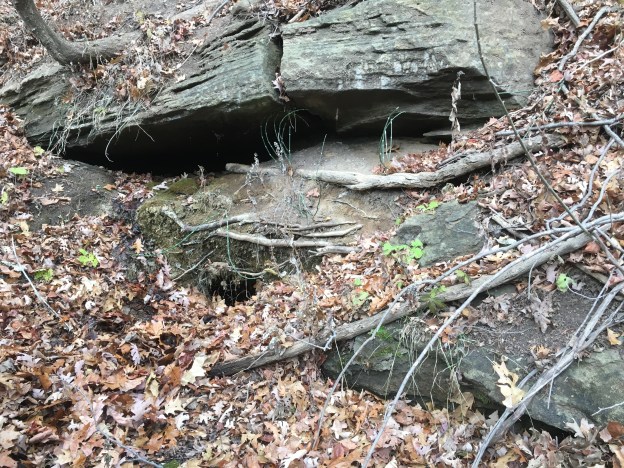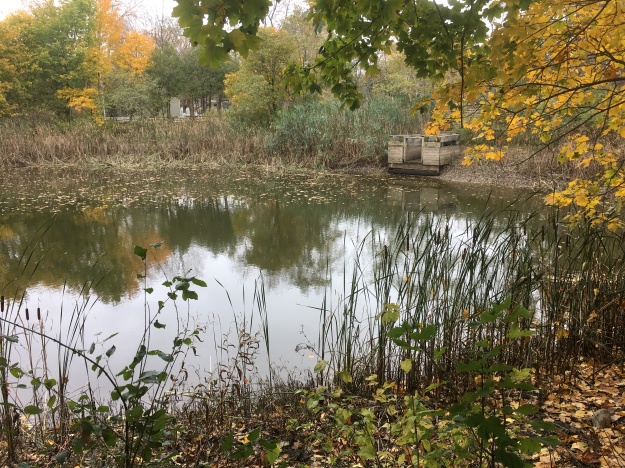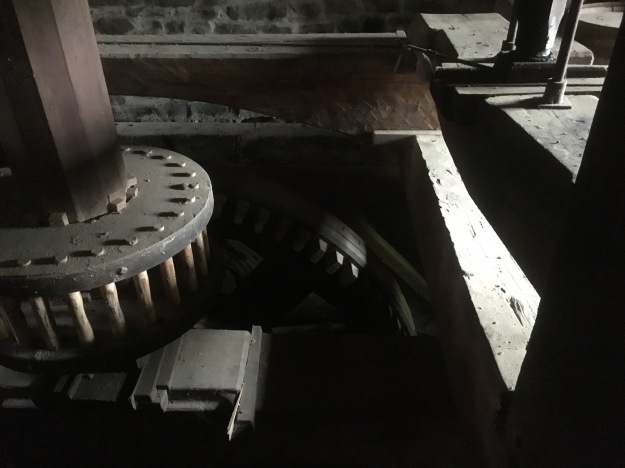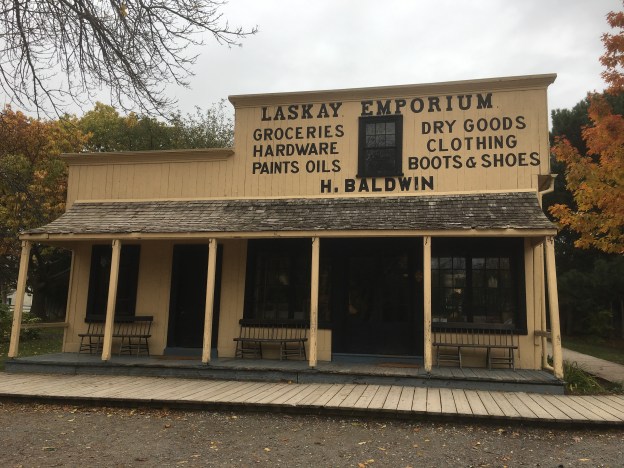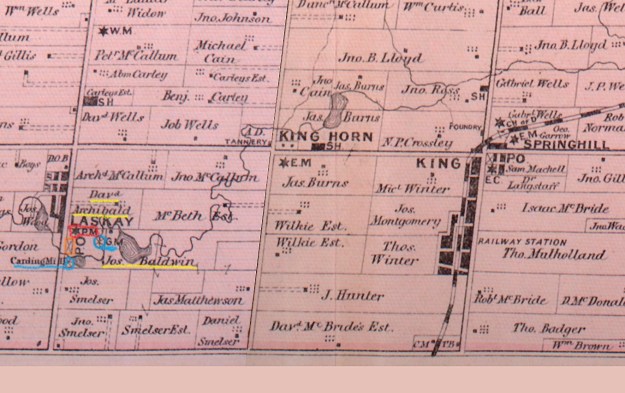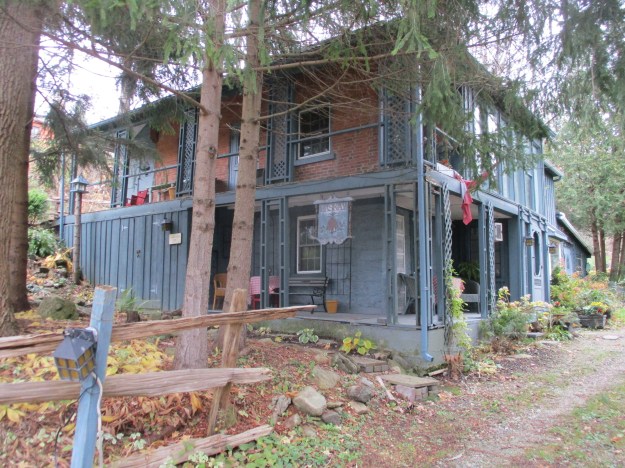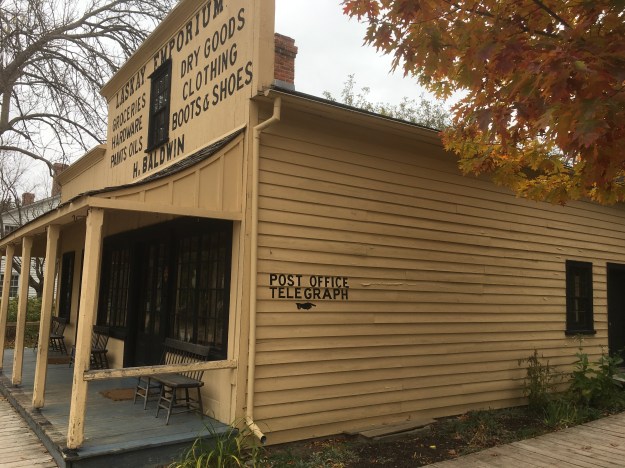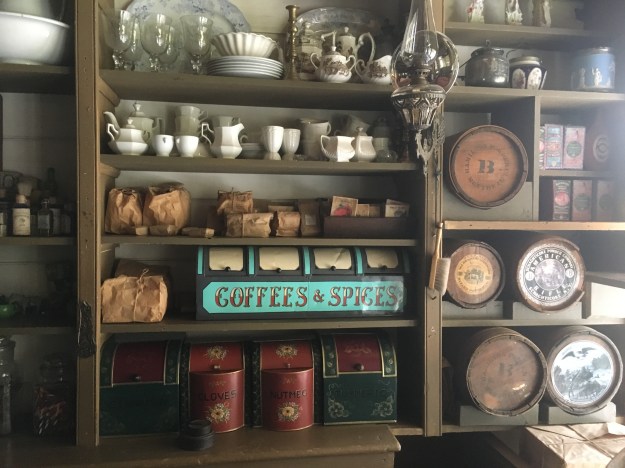Saturday, November 25, 2017
While investigating The Devil’s Cave we had the opportunity to drive through the former town of Palermo. Today there are several historic buildings left but they are being threatened by the expansion of Oakville. Widening of Bronte Road and then a bypass when highway 5 and 25 were moved has left the town with mostly empty buildings.
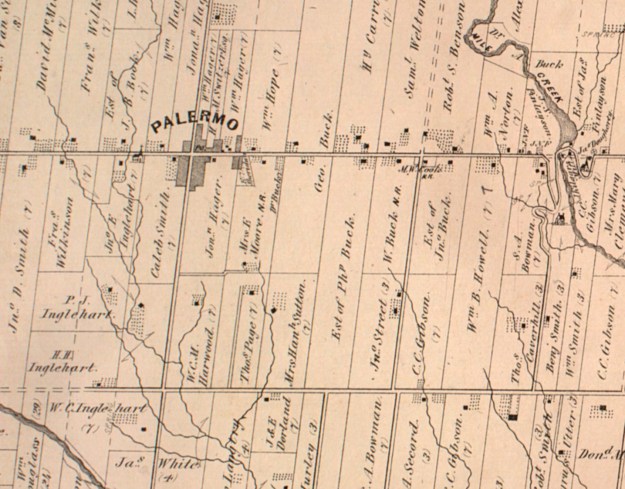
Lawrence Hagar arrived in 1805 and founded the town which was named Hagartown after him. In 1836 it was renamed Palermo after Horatio Nelson, Lord of Palermo. The Lawrence Foundry and Agricultural Works was founded in 1842 and became the main employer in the new community. The town grew quickly and by 1869 there were three hundred people living in the community at the intersection of Bronte Road and Dundas Street. In addition to the usual blacksmith shops and hotels, they also had a harness shop, a wagon shop, and a brick schoolhouse. Later the town included a telegraph company office as well. The picture below shows the town around 1900. The house in the foreground on the right remains but little else still does. The foundry is on the left but it burned down in the 1950’s.
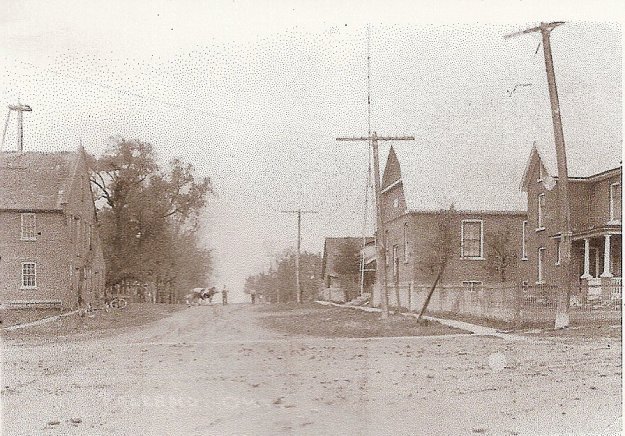
Lawrence Hagar built his original log home in 1805 and replaced it with a two-story Georgian home in 1848. That home was listed as vacant in 2008 but has since been removed. The third Hagar house was built in 1870 by Jonathan Hagar. Jonathan had moved out of Palermo when he was 25 in search of fortune in gold mines in Australia and California. When his father Lawrence died in 1857 he returned to Palermo to take over the family business. The house also features a small barn that was constructed around 1900 to house the family horses. The Hagar General Store stood just to the west of the house until it was removed for the widening of Dundas Street. This property is currently being rezoned for a 10 story apartment building that appears to incorporate the house in the main entrance to the tower. The house is registered with the historical society but does not have protection as a designated property.

Lawrence Hagar was a devout Methodist and the first worship services in town were held in his home. In 1824 land was deeded for a chapel on a property that had been used for a few burials beginning in 1813. A chapel was built but when the Methodist Episcopal Church of Canada and the Wesleyan Methodist church of England merged there was a split in Palermo and for a while two chapels existed. One was located on either side of the cemetery. In 1867 work began on a new church to house both congregations. The brick church was opened in 1869 with a steeple that has been removed since then. The church is still active under the name of the United Church of Canada.
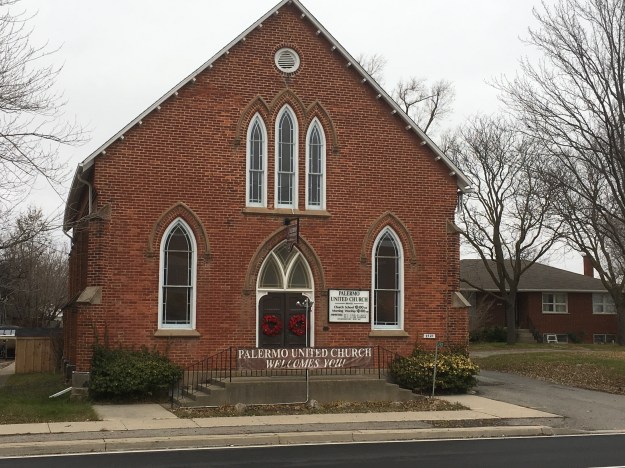
The cemetery has a surprising number of pioneer stones in it. The first burial was in 1813 and we found this stone which reads in part: Alexander Rose who departed this life September 27th, 1813 aged 44 years.
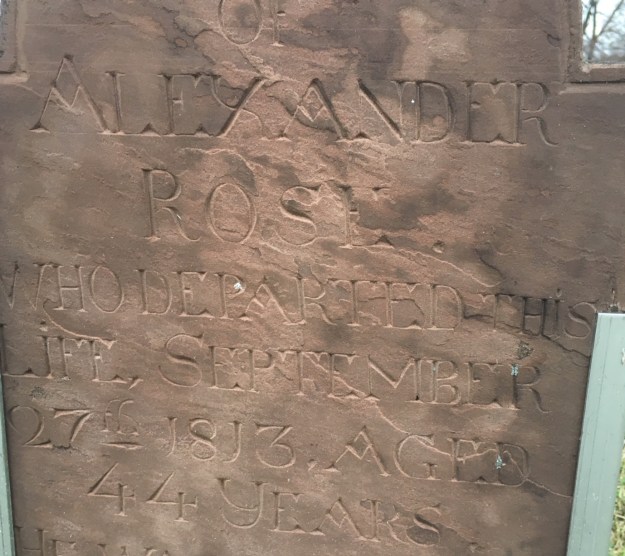
The present school is the fourth one to serve the community. As early as 1819 there was a one-room log school in town. It was one of only 3 schools in Trafalgar Township. A brick school was built in 1842 and then replaced in 1875. In 1940 this third school was damaged in a storm and many of the original materials were incorporated into the new building that opened in 1942. The school building has the 1875 date stone incorporated into the back of the building. It was closed in the early 1960’s and converted into the Palermo Police department. Today it houses the historical society and has been registered but not given a historical designation.

Dr Ansun Buck served the community for over 40 years. He built a surgery in his house in the 1860’s and from there took care of the medical needs of Palermo and surrounding area. Buck also designed one of the early bridges over Bronte Creek. When he died in 1919 he was buried in the Presbyterian Church cemetery. His house is an excellent example of Italianate architecture with a few Gothic touches to make it stand out. This is one of only two houses in town that is designated as a heritage structure
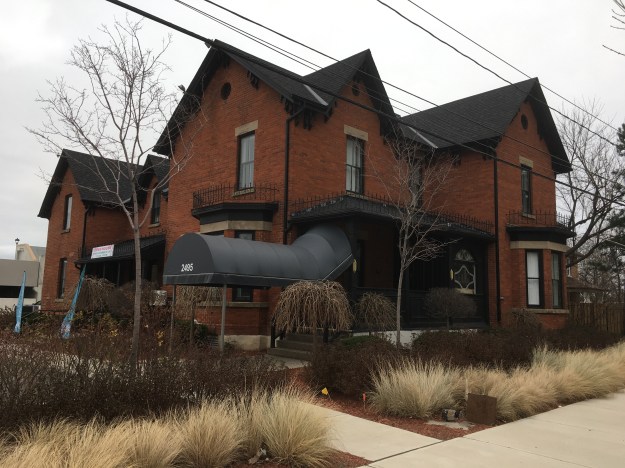
H. M. Switzer purchased 24 acres of land in 1861 and built this Italianate house in 1868. Switzer was the postmaster and a merchant in town. This is the other house in town to have a heritage designation.
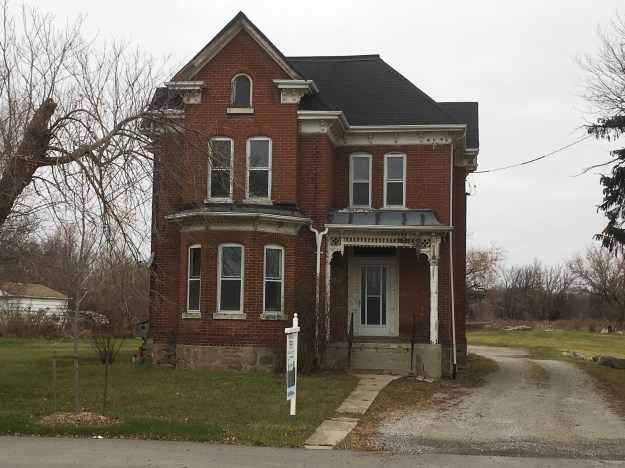
Caleb Smith built this house in 1875. His father was Benjamin Smith who was the town carriage maker in 1806. Smith built a large Georgian style house in 1822 that was the oldest home in Palermo. It was allowed to deteriorate and it finally collapsed in 2007. Caleb’s house is currently empty as are all the other original homes on the south end of Old Bronte Road. I hope they restore it because it has some very interesting bracketing on the front porch.

This gothic revival style house was built in 1880 beside the Methodist Church (now United Church). It served as a parsonage for the next 32 years with one of the ladies groups being charged with preparing it for each new minister. It was moved from the original location on Dundas Street to the present one on (old) Bronte Road around 1912 when the church sold it. There appears to be a plan to restore and move some of the homes to save them but it is unclear which ones.

This house on Dundas Street is one of the few that really look like they should be decommissioned. Rather, it looks to be in the process of collapsing as several other original structures in town have done. The cover photo shows the front door to be off centre, perhaps it was some kind of store at one time.
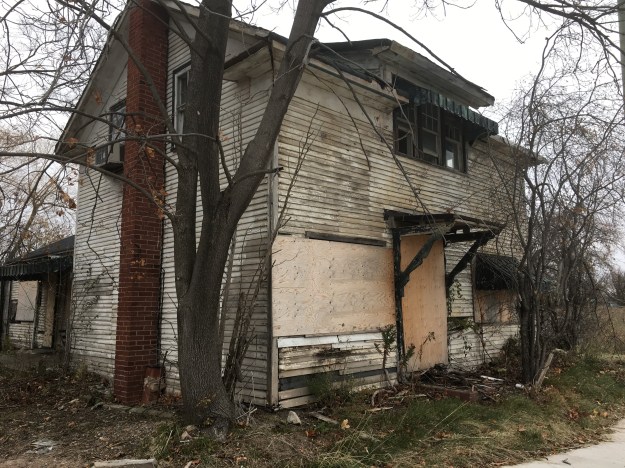
A park has always been central to Palermo life. The park used to be on the west side of town but was in the way of the revised intersection for highway 5 and 25. A new park with ball diamonds was created on the north side of Dundas Street. There is a pond that stands between the schoolyard and the new park. I imagine that there is no shortage of waterfowl in the summer months.
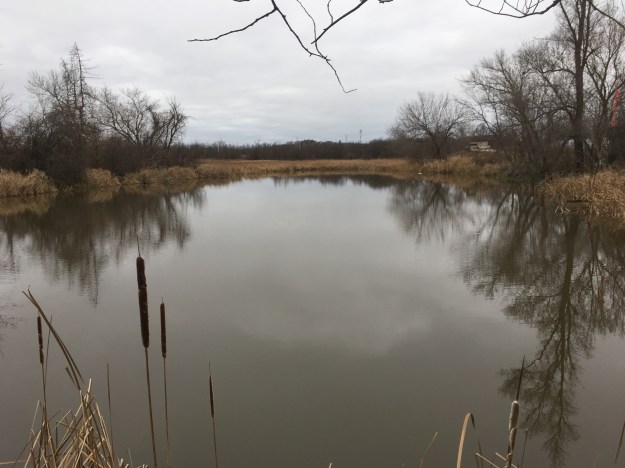
It remains to be seen what will come of the original community of Hagartown which flourished under the name of Palermo. I hope they don’t allow it to become a name on a signpost on a cemetery, commemorated by two or three original structures scattered among the new urban sprawl.
Google Maps Link: Palermo
Like us at http://www.facebook.com/hikingthegta
Follow us at http://www.hikingthegta.com
